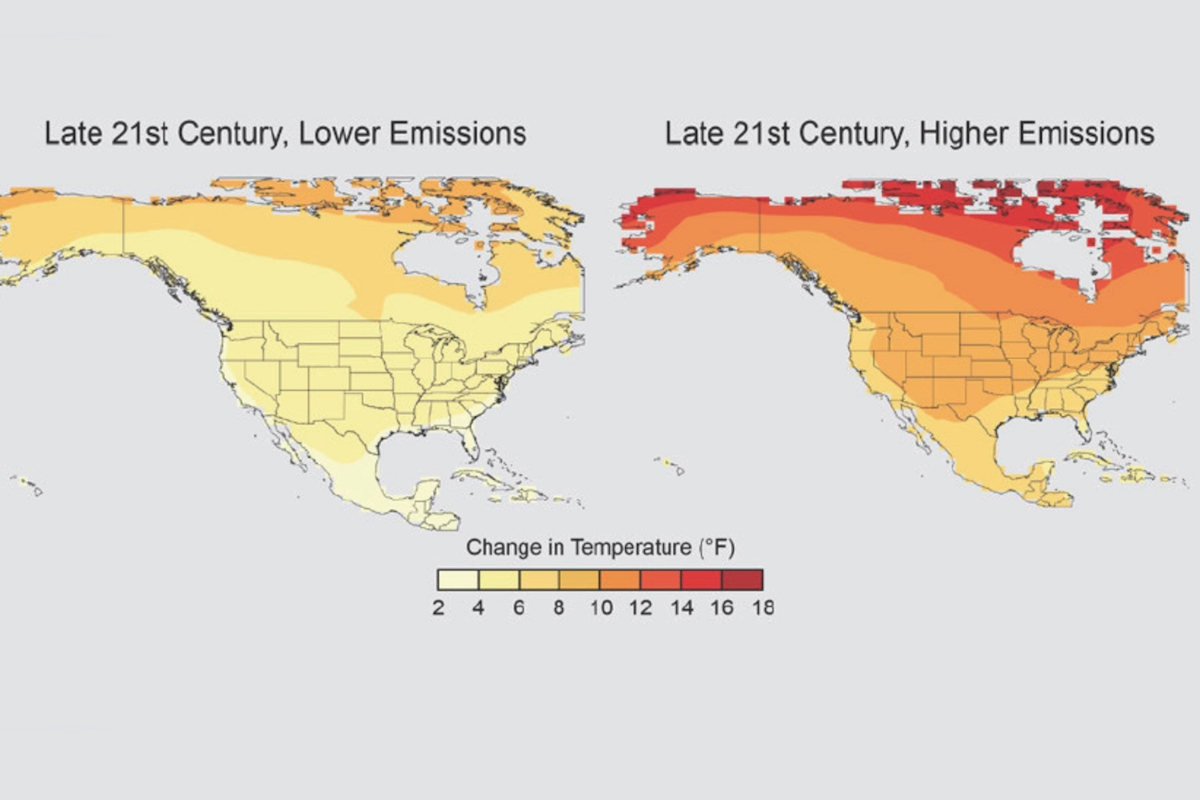A new study from Stanford finds that failure to meet the goals of the Paris Climate Accord will cost the U.S. economy several trillion dollars in the coming decades — and cost the world economy tens of trillions of dollars.
The study, “Large potential reduction in economic damages under UN mitigation targets,” was published in the journal Nature last week. It is among the first to analyze the economic benefits of keeping global warming to the levels unanimously agreed to by more than 190 nations at the 2015 Paris climate summit.
President Trump has made the U.S. a rogue nation — the only one in the world to abandon the agreement — under the misguided notion that it will hurt our economy. The reverse is true.
“In fact, we calculate the cumulative savings to the U.S. economy alone of meeting the most ambitious Paris targets could total $6 trillion (in today’s dollars),” the researchers Marshall Burke and Noah Diffenbaugh explained in The Hill on Sunday.
Studies have made clear that this huge economic loss from inaction is vastly larger than the cost of reducing carbon pollution.
Indeed, the Stanford study finds that inaction could cause a stunning 30 percent loss in future global economic output — whereas the world’s scientists and governments have concluded that even the most aggressive climate action costs under 0.1 percent of GDP.
In the Paris Accord, the world’s nations agreed to keep total global warming “well below 2°C” and ideally below 1.5°C. But it bears repeating that they only made specific CO2 reduction commitments through 2025 or 2030. If countries make no further cuts, total warming would still end up 3.0°C to 3.5°C above pre-industrial temperatures.
That’s why, in the Accord, over 190 nations unanimously agreed to come back to the negotiating table regularly with stronger commitments — to keep ratcheting down global CO2 emissions until they are near zero in the second half of the century.
With the policies President Trump has embraced — where we don’t even meet the initial Paris targets and we aggressively promote fossil fuels at the expense of clean energy — we are facing the very realistic prospect that total warming will be 4°C (7°F) or higher. And that, as the scientific literature makes clear, would be the end of modern civilization as we know it.
The Stanford study projects “15%–25% reductions in per capita output by 2100” if we allow 2.5–3°C total warming, and a 30 percent drop in economic output if we allow 4°C total warming.
We must all work to avoid such a catastrophe.



